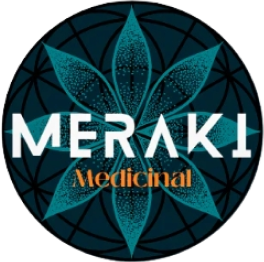Methylene Blue (MB) might be familiar to you as a laboratory dye or a medical treatment, but recent research suggests this century-old compound has remarkable properties that could revolutionize skincare and radiation protection. This versatile substance has demonstrated impressive capabilities ranging from UV protection to radioprotective effects, making it a compound of growing interest in both medical and cosmetic fields.
Methylene Blue as a Sunscreen Alternative
A 2021 study published in Scientific Reports by researchers at the University of Maryland and Mblue Labs investigated Methylene Blue's potential as a UV radiation protectant. The researchers found that MB not only provides effective UV absorption but also offers significant advantages over conventional sunscreen ingredients like Oxybenzone.
The study revealed several key findings about Methylene Blue:
- It has a broad-spectrum absorption range covering UVA, UVB, and UVC wavelengths
- It's more effective than Oxybenzone at blocking high-energy, short-wavelength UVB/C rays
- It reduces DNA damage caused by UVB radiation in human keratinocytes
- It increases cell survival after UVB exposure
- It's a potent reactive oxygen species (ROS) scavenger, outperforming other antioxidants like Vitamin A
Perhaps most importantly, the researchers found that MB is environmentally friendly and safe for marine ecosystems. Unlike Oxybenzone, which has been banned in several locations due to its harmful effects on coral reefs, MB had no negative impact on the growth of coral species in laboratory tests.
"Altogether, our study suggests that MB has the potential to be a coral reef-friendly sunscreen active ingredient that can provide broad-spectrum protection against UVA and UVB," the researchers concluded (Xiong et al., 2021).
Methylene Blue's Radioprotective Properties
Beyond its potential as a sunscreen, Methylene Blue has demonstrated remarkable radioprotective effects. A 1975 study published in the Journal of Radiation Research examined MB's ability to protect rats from gamma radiation.
The researchers found that administering Methylene Blue before radiation exposure significantly reduced radiation damage as measured by several biomarkers:
- It reduced increases in serum glutamic oxaloacetic transaminase (SGOT) after radiation exposure
- It delayed the rise in serum glutamic pyruvic transaminase (SGPT)
- It protected against decreases in serum amylase activity
- It preserved serum lipase activity
- It delayed the decrease in serum lecithinase A
- It preserved protein bands in pancreatic juice that would otherwise be lost after radiation exposure
The researchers concluded that "methylene blue has a marked biochemical radioprotective action on the serum enzymes and on the proteins of pancreatic juice of rats when it is given before exposure" (Chung & Nam, 1975).
This radioprotective effect appears to be optimal when MB is administered shortly before radiation exposure at doses of 38-40 mg/kg, suggesting potential applications in radiation therapy or radiation protection scenarios.
Methylene Blue as an Antioxidant Powerhouse
A particularly impressive aspect of Methylene Blue is its antioxidant capabilities. The University of Maryland researchers compared MB with other popular antioxidants used in skincare, including Vitamin A (retinol) and Vitamin C.
Their experiments showed that:
- MB enhanced cell proliferation similar to Vitamin C
- MB was the most effective at reducing mitochondrial reactive oxygen species (ROS) in all tested cell lines
- When combined with Vitamin C, MB showed synergistic benefits, especially in older skin cells
- Unlike BP-3 (Oxybenzone) and Vitamin A, which had minimal effects, MB consistently demonstrated antioxidant properties
"MB is no doubt the most effective ROS scavenger in human skin cells," the researchers stated. The combination of MB and Vitamin C produced "the highest skin cell proliferation rate and lowest cellular stress as determined by mitochondrial ROS assay" (Xiong et al., 2021).
Mechanisms of Action
How does Methylene Blue achieve these diverse protective effects? Several mechanisms have been proposed:
- DNA repair activation: MB appears to stimulate DNA repair pathways, potentially reversing damage caused by UV radiation.
- Antioxidant cycling: MB has a low redox potential of 11 mV, allowing for efficient cycling between oxidized (MB) and reduced (leucomethylene blue) forms. This facilitates electron transport in mitochondria and reduces superoxide production.
- Free radical scavenging: Evidence suggests MB protects biological molecules against radiation-induced oxidation of water and decreases oxygen tension in organisms.
- Protection of sulfhydryl enzymes: MB may protect sensitive parts of certain sulfhydryl (SH) enzymes against radiation damage.
Future Applications and Research Directions
The remarkable properties of Methylene Blue suggest numerous potential applications:
- Next-generation sunscreens: MB-based sunscreens could provide both UV blocking and DNA damage mitigation while being environmentally friendly.
- Anti-aging skincare: The combination of MB and Vitamin C could form the basis of highly effective anti-aging formulations.
- Medical radiation protection: MB might be useful for protecting patients undergoing radiation therapy or in radiation emergency scenarios.
Before MB can be widely incorporated into consumer products, regulatory hurdles remain. In the US, the FDA regulates sunscreens as over-the-counter medications, and new ingredients must undergo rigorous safety testing. Nevertheless, the mounting evidence of MB's benefits makes it a promising candidate for future applications.
Conclusion
Methylene Blue's remarkable combination of UV protection, antioxidant properties, and radioprotective effects makes it one of the most versatile compounds being studied for skin protection and health. While more research is needed to fully understand its mechanisms and optimize its applications, the current evidence suggests that this century-old compound may play an important role in next-generation skincare and medical treatments. If you're ready to try the purest form of Methylene Blue on the market, use code TRY10 at checkout for 10% off your first order with Meraki Medicinal.
References
- Xiong, Z. M., Mao, X., Trappio, M., Arya, C., el Kordi, J., & Cao, K. (2021). Ultraviolet radiation protection potentials of Methylene Blue for human skin and coral reef health. Scientific Reports, 11(1), 10871. https://doi.org/10.1038/s41598-021-89970-2
- Chung, S. O., & Nam, S. Y. (1975). The Radioprotective Effect against Gamma-Irradiation of Methylene Blue in the Rat with Reference to Serum Enzymes and Pancreatic Protein Fractions Examined by Isoelectric Focussing. Journal of Radiation Research, 16(4), 211-223.

